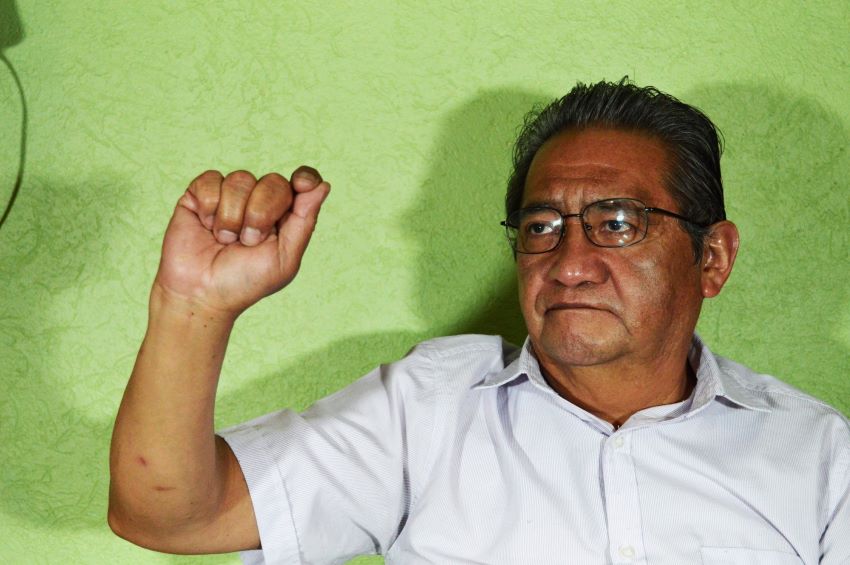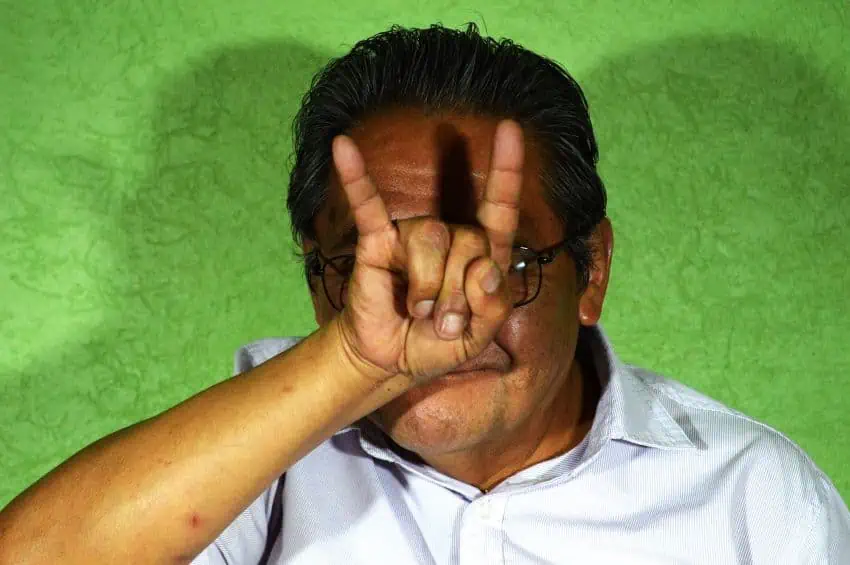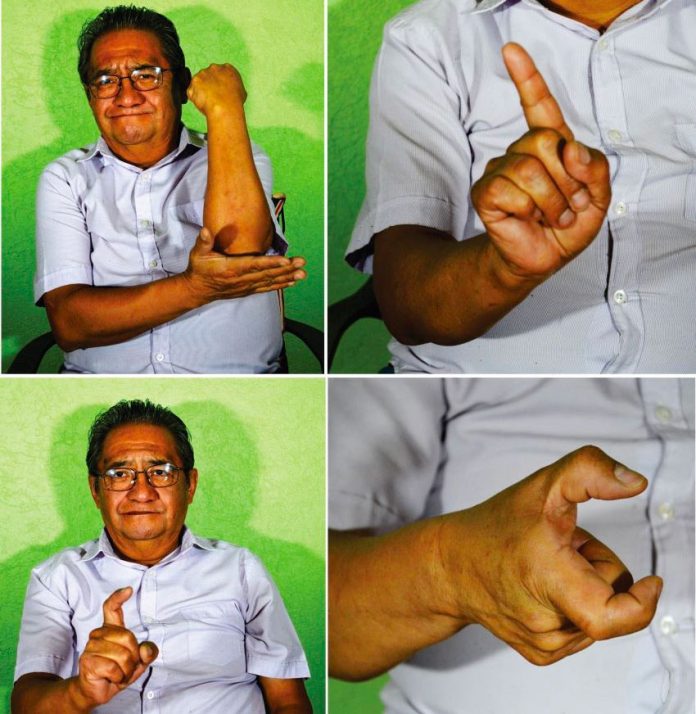Shortly after arriving in Mexico, I was confronted by a hand gesture at work that took me aback.
A person passed in front of me, and I let him by. The response was the raising of the palm to chest level with the back of the hand facing out.
I knew of a similar gesture, but I had not done anything that would justify something so rude. Using context and a memory of the theater, I assumed that the signaler meant “thank you,” which I confirmed with the Mexican sitting next to me.
It should not be surprising that Mexican hand gestures can differ, and there are sources on the internet that talk about some of the most common. Aside from the one meaning “thank you,” they include those for:
- “Check please” – done by raising the hand and making a motion like writing something
- “Cheap/stingy” – tapping a bent elbow with the palm, which refers to the idea of wearing a sweater or jacket even though the elbows have been worn out.
- “Yes” – (can mean “exactly right”) – index finger up then bent slightly several times.
- “No” – index finger up and wagged side-to-side (This one does not have the accusatory meaning it can have in other cultures; it is neutral.)
- “Money” (sometimes “expensive”) – index finger and thumb curled up to a “u” shape, sometimes the hand goes up and down slightly.

But there are others you will likely see over time such as:
- “Drink,” (especially alcoholic) – thumb and pinkie extended with thumb approaching the mouth.
- “Far away” – waving the hand outward, usually at forehead level
Mexicans have several gestures involving bringing the tips of the fingers of one hand together, similar to a well-known one in Italy and New York. If the fingertips approach the mouth, the meaning is “food.” If the fingertips separate and come back together in succession, the meaning is “coward” or “fear.”
If one or both hands are making the gesture, moving up and down, the meaning is “a lot” or “crowded.”
The existence of Mexican gestures does not mean that there are no similarities. As a Western country with influence from television and movies, many gestures used in other countries, especially in the U.S., are used here or are at least known. These include but are not limited to:
- The famous U.S. gesture for “OK;”
- the V(ictory) sign;
- slapping the palm against the forehead;
- thumbs up and thumbs down;
- one palm outward (both meanings, “stop” and “talk to the hand”);
- curling the index finger (“come here”);
- fingers crossed, but only the version in front of the person. The version where the fingers are crossed behind the back (false promise or statement) is known from the movies but not used in Mexico;
- “knock wood,” but this is done with the fingertips in Mexico, not the knuckles, although the knuckle version is understood;
- pointing using the index finger is common in Mexico, and the rules determining this gesture might seem to be similar as well.

Some gestures can have a different meaning in Mexico:
- Slapping the palms together as one hand rises and the other falls means “Let’s go” rather than “it’s finished” as it does in the States. (If this motion is followed by both palms moving outwards, then it has the “finished” meaning.)
- Rubbing the thumb against the index and middle fingers can be used to urge someone to get going, rather than indicating money. Tapping the wrist with the index finger is used to ask for the time, not to pressure someone.
- Holding up an index finger simply means the number one. It does not mean “wait a minute.” To indicate “wait,” Mexicans bring the tips of the thumb and index finger together with the other fingers curled — the gesture which means “a little bit” in some other countries.
Of course, we foreigners have gestures that are not recognized here at all. These include:
- The tip of the index finger to the tip of the nose with the meaning of “exactly;”
- the British gesture of tapping the nose three times to mean “don’t be nosey;”
- the index finger twirled into the cheek to mean “cute” or “innocent;”
- For more than a few U.K. folks, the “two fingers” sign is well-noted as lacking offensive meaning in Mexico. But many British expats admit to using it here anyway, especially when driving.
And speaking of the bad gestures … When I started this article, my Mexican husband immediately offered his expertise on these, of course. However, we will try to keep this B-/PG-/12A-rated.
- The two most common offensive gestures are the middle finger (like the U.S.) along with one that means a**hole (the “OK” sign with a smaller circle and all fingers curved).
- One hand cupped, usually held low, means that someone is very lazy (from the idea of testicles).
- One that used to be very offensive but has lost much of its sting is the “put on horns.” It used to mean güey, a man who was unable to keep his woman from cheating on him, but today it simply means that someone is trying to fool or trick someone else or that someone is not being smart. This one seems to be falling out of use.
- Still offensive is to extend the pinkie in the direction of a man, indicating something about size.
- There are at least two that indicate that a man is gay, but I won’t describe any of them here.

I will end with one that is not exactly a hand gesture. If you watch old Mexican movies from the 1950s or so, the “shave and a haircut knock” has the same meaning as it does elsewhere now. However, somebody in Mexico got the idea that its cadence is just like a really offensive expression, and that ended all pretense to innocence.
Today, it is more a sound than a hand motion, with variations worked out for car horns and whistling. Not recommended for imitation, though I admit using this knock occasionally to playfully annoy my husband and brother-in-law.
Leigh Thelmadatter arrived in Mexico 17 years ago and fell in love with the land and the culture. She publishes a blog called Creative Hands of Mexico and her first book, Mexican Cartonería: Paper, Paste and Fiesta, was published last year. Her culture blog appears regularly on Mexico News Daily.
